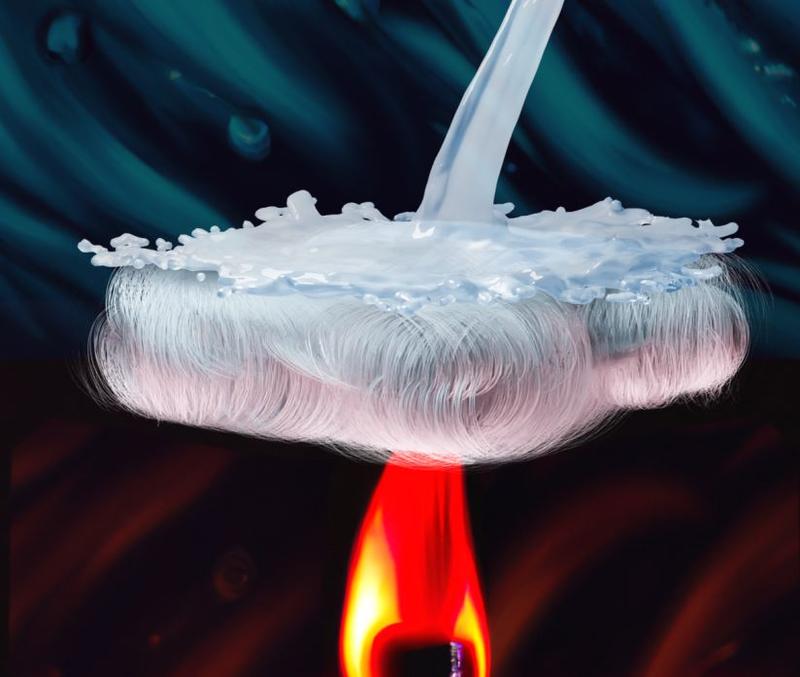3D electrospinning of AI203/SrO2 fibrous aerogels for multipurpose thermal insulation

'The secret to AZFA's thermal tolerance lies in its unique microstructure, each fibre consisting of nanocrystalline zirconia and amorphous alumina. Also, the extraordinary mechanical resilience is endowed by the highly entangled and continuous 3D fibre network'
Future thermal insulation is lighter, more durable, and capable of withstanding extreme conditions. Researchers in this department have employed a scalable technique to develop ultralight fibre materials, alumina/zirconia fibrous aerogels (AZFA), which could reliably insulate heat in high temperatures, high humidity, and corrosion environments, revolutionising the thermal insulation in various industries. This study has been accepted by Advanced Composites and Hybrid Materials (20 September 2023) and is highlighted by Nanowerk.
Ceramic aerogels, such as the monolithic silica aerogels, are well-known as ultralight solid materials with a density five to ten times of the air. These materials have gained enormous attention due to their advantageous hardness and unparalleled thermal insulating performance. Traditional ultra-porous aerogels, however, suffer from (for example) brittleness, structural degradation and moisture absorption, remaining practically impossible for most applications.
The Nanomaterials by Design team of researchers in Oxford address these limitations by employing a pioneering technique called 3D sol-gel electrospinning to create ultralight, flexible, fibre-assembled aerogels. This new approach devised by the researchers enables the in situ formation of the 3D fibre assemblies with significantly reduced time consumption and low processing cost compared to most existing methods, offering a cost-effective and scalable solution for producing advanced thermal insulators.
In this work, the fibrous aerogel materials (AZFA) exhibit ultralow density down to 3.4 mg cm-3, superior flexibility and elasticity, and thermal conductivities lower than air - a combination of merits that outperform most current-of-the-state insulators. What also sets AZFA apart is its ability to remain highly flexible even at incredibly high temperatures up to 1300oC, and it does not melt or weld even at 1500oC, making it a game-changer for industries that operate in extreme heat.
Dr Barbara Maciejewska, who co-supervised the study, says:
'One of the most remarkable findings of this research is the relationships between the macroscopic fibre arrangement, microscopic fibre structure, and the solid-phase thermal conduction. Such knowledge enables researchers to design novel fibrous insulators with lower thermal conductivity and directional heat transport'.
Dr Shiling Dong, author of the paper, points out that:
Another aim of this work is to address the moisture-sensitivity problem of most existing aerogels. We created self-cleaning hydrophobic materials that are durable in wet, humid environments and can even be used as thermal shields underwater, promising for (as an example), sub-marine oil pipelines. These fibre materials also have selective absorption properties that make them ideal for removing organic solvents from water'.
Professor Nicole Grobert comments:
The development of 3D sol-gel electrospinning technique and the output to these innovative ultralight ceramic fibres both represent a major advancement in the field of thermal insulation. This research has a long-term impact in the sustainable mass production of functional fibres that meet the growing needs in energy automobiles, high-rise buildings, aircraft, aerospace, etc'.
As industries seek innovative solutions for the emerging need for better insulation, these alumina/zirconia fibrous aerogels open new possibilities. This breakthrough has the potential to transform industries by providing reliable insulation under the harshest conditions, enhancing energy efficiency and safety across various sectors.


